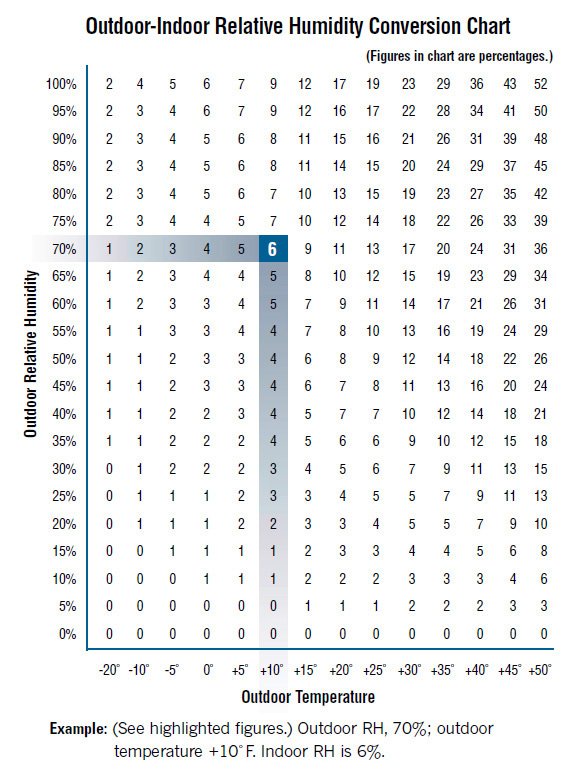Table of Content
- Too Low Humidity Levels
- Managing Humidity in the Winter
- Mold growth from high indoor humidity levels
- Try to keep surfaces dry
- Finding the Ideal Humidity Level for the Air in Your Home
- Everything You Need to Know About Achieving the Ideal Humidity Level in Your Home
- What is the ideal humidity level for your house?
For that, a hygrometer is useful, though a hygrometer will not control the humidity level as a humidistat does. Regardless of the climate you live in, managing ideal humidity for your home should be a priority for every homeowner. The truth is, the levels of indoor humidity in the air can affect your health, the comfort of your home, and the proper functioning of your cooling and heating systems.
To start reducing the humidity in your house, you need to first identify the source of the humidity. Cooking food and boiling water will create humidity inside your home. Your body relies on the evaporation of sweat to cool itself. But if the humidity is too high, your sweat cannot evaporate. Generally speaking, the humidity should be between 30-60% in your house.
Too Low Humidity Levels
Wood furniture can split and crack — from expensive dining room tables and chairs to china cabinets, clothes dressers, and more. If you have wood flooring throughout much of your home, that’s a pretty big investment. Keeping the humidity levels at the right range can save you money and keep the wood in your home in the best shape possible. High humidity can be a prime environment for several problems (and dangers!).

They are decorative, purify the air and ensure a higher humidity in the house. What should you set your humidifier at in the summer? That is primarily for a stand-alone humidifier setting.
Managing Humidity in the Winter
Wood, building materials, and furniture are robbed of their moisture when the air is dry. Damaged drywall, flooring, or subflooring due to mold growth stimulated by excessive moisture. Use portable dehumidifiers to remove moisture from humid areas of the home.

A lack of moisture can also cause your wood floors or furniture to crack. A simple tool can help you avoid the home and health challenges that arise from too much or too little humidity. Safe humidity levels create an environment that is more comfortable as well as healthier. You want your home’s humidity to be between 30 percent and 50 percent, according to BobVila.com. People whose home humidity levels are maintained between 30% and 50% will become sick less often and get higher-quality sleep.
Mold growth from high indoor humidity levels
Indoor air is a mixture of mostly air and some water; if you have more water, that air will be harder to heat. At 0% relative humidity, there are 0 gallons of water in the air. Most people know it’s essential to stay hydrated, but did you know that too much moisture can make breathing difficult? That’s because when the air is full of water vapor, it becomes harder for the lungs to exchange oxygen and carbon dioxide. This can lead to shortness of breath, wheezing, and even coughing. When the relative humidity is higher, surface temperatures need to be warm to avoid condensation from occurring..
The humidity level in your home should stay between 30 percent to 50 percent, says Richard Ciresi, the franchise owner withAire Serv, aNeighborly company. "If your home or any part of it has a humidity reading of over 50 percent, consider installing or running a dehumidifier," he says. "An HVAC technician can take a reading or multiple readings throughout your property to determine what level of humidityis currently present."
Try to keep surfaces dry
When the fan in your furnace unit turns on , it will spread moisture throughout the home to keep it from being dry. While this isn’t uncommon in Central Ohio, most people are used to having to add moisture in the winter. Often, I find myself having to dehumidify even in the winter. Caulking and weatherstripping the windows and doors in your home can improve energy efficiency and prevent humid air from entering your home.

High or low levels can also exacerbate existing respiratory symptoms, allergies, asthma and increase your chances of catching a common cold or flu. Additionally, air that is too dry or too humid is just generally uncomfortable to live in. When indoor humidity falls below 40%, it is considered a low humidity level. Low indoor humidity is more common during the winter season, particularly in regions that regularly experience freezing temperatures and snowfall. A lack of humidity in the air has health impacts, causing dry skin, lips and eyes, itchiness and a sore throat.
These devices can’t change anything; they’re only good for monitoring. That’s why we’d recommend paying a bit more for a humidifier or dehumidifier that comes with a built-in set of sensors. The same is true for bathroom fans, refrigerators, and food processors.

And of course, one of the best methods of increasing humidity in a house is to use a humidifier. Health and comfort are the two main factors to worry about when it comes to low humidity. This means that any outside air that comes into your house from the outside can be considered an external source of humidity. External sources of humidity originate from outside of your house.
The air conditions inside your basement or crawlspace directly impact the air inside your home. For example, water in the soil in your home’s crawlspace can evaporate and create humidity that seeps into your home. On the other hand, humid air from the attic can infiltrate the home’s interior as well.


No comments:
Post a Comment